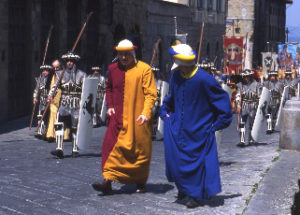Life’s soundtrack should be big: Rossini Opera Festival makes a splash
The Rossini Opera Festival in Pesaro, Italy was over the top! I love watching live orchestras and this one had 5 string basses. 🙂 And the
The Rossini Opera Festival in Pesaro, Italy was over the top! I love watching live orchestras and this one had 5 string basses. 🙂 And the
500 olive trees. Sciacca, Sicily. © Laurel Decher, 2016. I recently came across another inspiring example of using your inheritance to create something new. Alessandro

The Middle Ages come to life in Arezzo, Italy. ©Jan Decher, 2002 The itinerary included the most important and accessible places in the story: Bologna